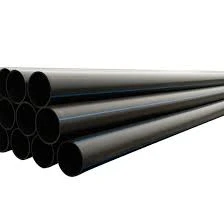10월 . 11, 2024 22:06 Back to list
Creating a Drip Irrigation System Using PVC Pipe for Efficient Watering Solutions
Drip Irrigation from PVC Pipe A Sustainable Solution for Agriculture
Drip irrigation is a revolutionary agricultural technique that maximizes water efficiency and promotes healthy plant growth. Among the various methods of implementation, using PVC (polyvinyl chloride) pipes has emerged as a popular choice for both commercial farming and home gardening. This article explores the benefits, construction, and tips for establishing a drip irrigation system using PVC pipes.
Benefits of Drip Irrigation
One of the most significant advantages of drip irrigation is its water efficiency. Traditional irrigation methods, such as flooding or sprinkler systems, often result in substantial water loss due to evaporation or runoff. In contrast, drip irrigation delivers water directly to the root zone of plants, minimizing waste and ensuring that each plant receives an adequate supply of moisture. This targeted approach not only conserves water but also reduces the frequency of irrigation sessions needed, making it particularly advantageous in arid regions or during periods of drought.
Additionally, drip irrigation can enhance crop yields by providing a consistent supply of water. This steady moisture helps to prevent stress on plants, which could otherwise affect their growth and development. Moreover, drip irrigation reduces weed growth by limiting the areas that receive water, and it lowers the risk of disease by minimizing water exposure on the foliage.
Building a PVC Drip Irrigation System
Creating a drip irrigation system from PVC pipes is a straightforward process that can be accomplished with basic tools and materials. Here’s a step-by-step guide to setting up your own system
1. Planning Before beginning, assess the layout of your garden or farm. Identify the plants that will benefit from the irrigation system and determine their water requirements.
drip irrigation from pvc pipe

2. Materials Gather the necessary materials, including PVC pipes (usually 1/2 inch in diameter), PVC connectors and fittings, a main water supply line, and drip emitters or tubing that will deliver water to each plant.
3. Installation of Mainline Begin by installing the main water supply line, which is typically a larger diameter PVC pipe. This will transport water from your source to the various sections of your garden.
4. Connecting the Drip Lines From the mainline, cut smaller sections of PVC to create lateral lines that will run parallel to your plants. Attach the drip emitters to these lines, placing them at intervals according to the water needs of your plants.
5. Functionality Check Once everything is connected, turn on the water supply and check for leaks. Ensure that each emitter is functioning correctly and delivering water as designed.
6. Adjustments and Maintenance Regularly monitor the system to make adjustments as needed. Clean the emitters to prevent clogging and ensure optimal water flow.
Conclusion
Drip irrigation using PVC pipes presents an efficient and effective method for delivering water directly to the roots of plants, maximizing resources while promoting healthy growth. Its adaptability to various scales of agriculture makes it a viable option for both household gardens and expansive agricultural operations. By following the steps outlined, anyone can implement their own drip irrigation system, reaping the benefits of sustainable farming practices that conserve water and enhance crop yields. This innovative approach not only contributes to better agricultural productivity but also supports environmental sustainability, making it an essential consideration for modern agriculture.
-
PVC Transparent Sheet Roll - Durable & Flexible PVC Plastic Sheet Roll for Industrial & Home Use
NewsJun.24,2025
-
High-Quality PVC PPR Pipes and Fittings Durable ERA PPR Solutions
NewsJun.10,2025
-
High-Quality Large HDPE Sheets & Large Diameter PVC Pipe Durable Large PVC Pipe Supplier
NewsJun.10,2025
-
High Density Polyethylene Cutting Board - Durable & Food Safe
NewsJun.09,2025
-
3 Inch PVC Pipe for Durable Irrigation Affordable & Reliable
NewsJun.09,2025
-
Premium PPR Plastic Water Pipe Fittings - Durable & Leak-Free
NewsJun.09,2025

